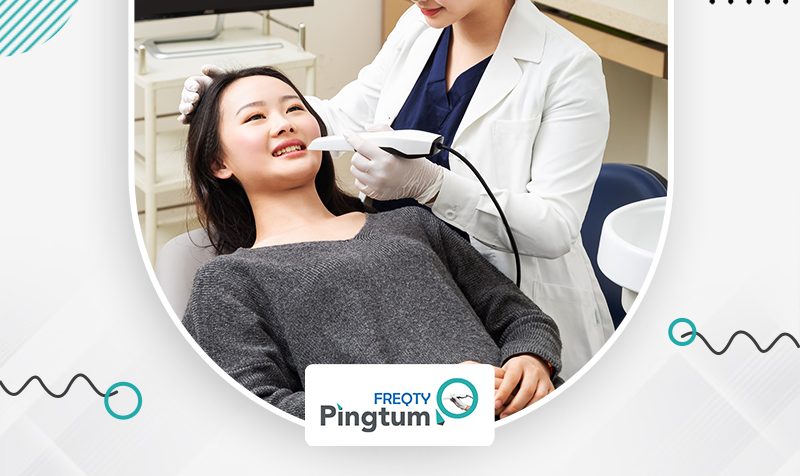One of the primary requirements of diagnosing and treating any dental ailment is looking into the buccal cavity using imaging technology. Conventionally, X-rays are used to obtain images of the specific areas of teeth and gums. This process can take time as the X-ray images need to be developed and are often not crystal clear for the dentist to make a correct diagnosis. However, modern imaging technology has given dentists a wonderful tool called the intraoral scanner that mostly uses a laser. It is an electronic device that creates optical images (static or moving) of the anatomical structures of the buccal cavity for the below-mentioned usages.
- For correcting teeth alignment using retainers
- For partial prostheses and obturators
- For the treatment of lingual brackets and invisible aligners
How does an intraoral scanner function?
The probe of the intraoral scanner containing the camera when passed over the teeth and gums of the patient captures optical impressions of the area by emitting a light source, mostly laser. The optical impressions are then processed by the software to recreate a three-dimensional model on the monitor. The scanner device can be of two types; photographic technology scanner and video technology scanner. In the former, individual images of the buccal cavity are scanned to form a digital 3D model. Whereas in the latter, video technology is used to record the scanned moving images.
How does an intraoral scanner benefit your dental clinic?
The use of modern imaging techniques in your dental clinic can develop trust among patients as they no longer have to endure the discomforting experience of holding alginate or silicone materials in their mouths. The use of a digital scanner has simplified the workflow in the clinic and has facilitated prosthetic or orthodontic treatments. The other benefits of using such a scanner are as follows:
No use of alginates or silicones: In traditional dentistry, the cumbersome use of silicones or alginates in obtaining impressions often leads to discomfort such as gag reflex, bad taste, smell, etc. Moreover, such impressions are not always stable or error-free and often lead to lacerations inside the mouth. However, with the use of digital scanners, there is no need to bother the patient by taking physical impressions. In other words, complaints of smell and taste of alginates or silicones, which caused much annoyance among patients, can be done away with. In a digital scanner, the process of taking optical impressions of the teeth and gums is pleasant, smooth, efficient, and seamless.
Takes less time: With a digital scanner taking optical impressions of the buccal cavity is significantly quick and convenient. Instead of hours, sometimes days, spent in traditional dentistry the modern method is quicker, say 2 – 3 minutes in creating a 3D model. The consequent reduction in the waiting time means a better patient experience and a favourable word-of-mouth publicity of your clinic.
Precision models: As opposed to the traditional method of obtaining impressions, which may not always be precise, the digital intraoral scanner can generate high-fidelity models without wrinkles, bubbles, tears, or cracks. The precision of the 3D images is incredible.
Correct defects instantly: In the event of the optical impressions getting distorted (a rare occurrence,) they can be corrected instantly by scanning the area again.
Save digitally: In traditional dentistry, considerable space is required to store the plaster models, be it at the clinic or the laboratory. However, in digital dentistry, 3D images can be saved in a computer’s hard disk or cloud to be retrieved and accessed at any time or place.
Conclusion
Modern digital imaging equipment like an intraoral scanner offers a host of benefits to the dental clinic. Besides simplifying diagnosis it can help your clinic to be differentiated from your competitors and patients would be able to visualize the progress of their treatment. The superior patient experience is likely to lead to a better recommendation of your clinic to others.






